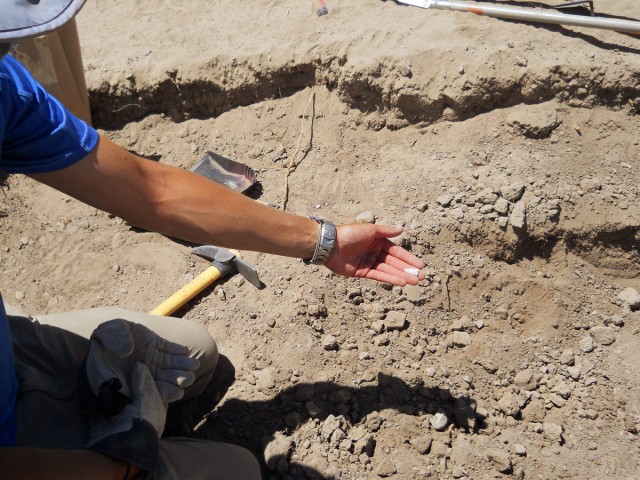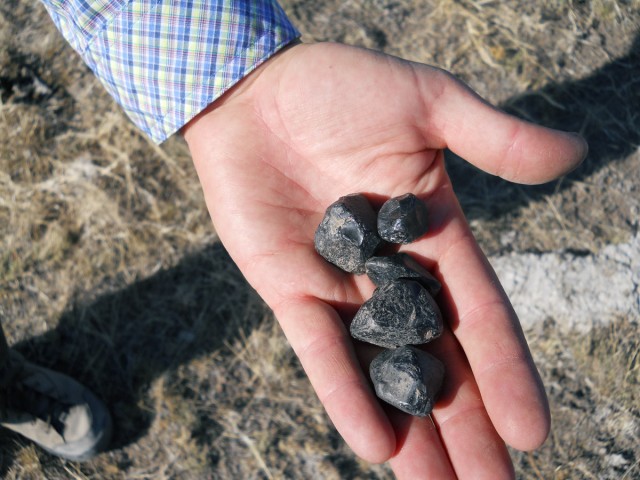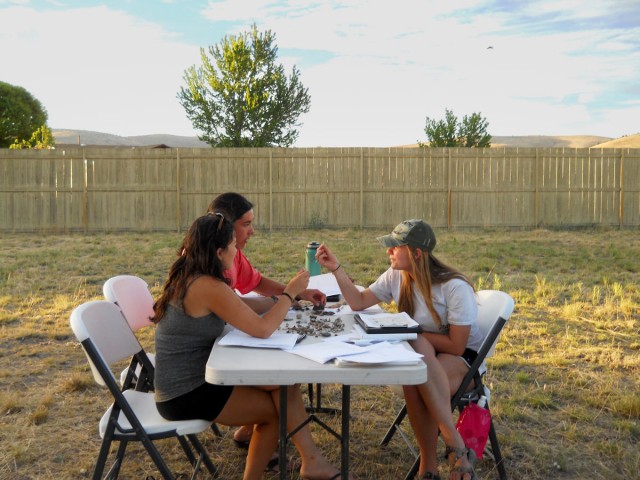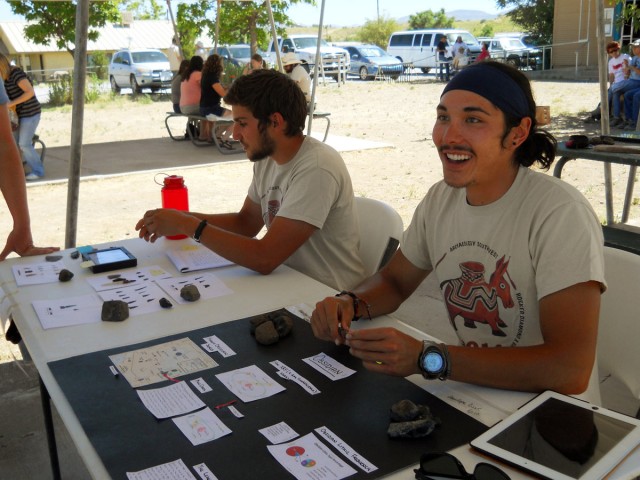- Home
- >
- Preservation Archaeology Blog
- >
- Learning Lithics at Mule Creek
By Stacy Ryan
For me, the words “Mule Creek” have always brought to mind the obsidian from this area, which people in the past used to make stone tools, and which was widely distributed. For this reason, Mule Creek is an especially interesting place to teach students about flaked stone technology.
During the field school season, the students were able to learn about flaked stone artifacts in a variety of ways. We began with the mechanics of stone tool production and how to distinguish flaked stone from the thousands of pieces of unmodified rocks they would encounter while excavating and on survey. Their understanding was greatly enhanced by observing, and later participating in, flintknapping workshops given by expert knapper Allen Denoyer.

This was complemented by a visit by Dr. Steven Shackley, who specializes in archaeological obsidian studies. During Steve’s tour of the obsidian source areas, the students learned about the Mule Creek caldera and walked through a field of obsidian nodules, flakes, and cores.

While finding artifacts in the screen and sorting them during late-afternoon lab sessions, the students learned how to identify various types of flaked stone artifacts. These times provided many opportunities for us to discuss flaked stone technology and what it tells us about the past. As field and lab work progressed, students were able to make inferences about behaviors at the Dinwiddie site by looking at tool types and raw materials.


As a flaked stone analyst, contributing to the students’ learning process was immensely rewarding. Seeing their satisfaction when they learned to identify a flake, and sharing their excitement when a projectile point was found in their excavation unit, made really good field days even better.
Explore the News
-
Join Today
Keep up with the latest discoveries in southwestern archaeology. Join today, and receive Archaeology Southwest Magazine, among other member benefits.